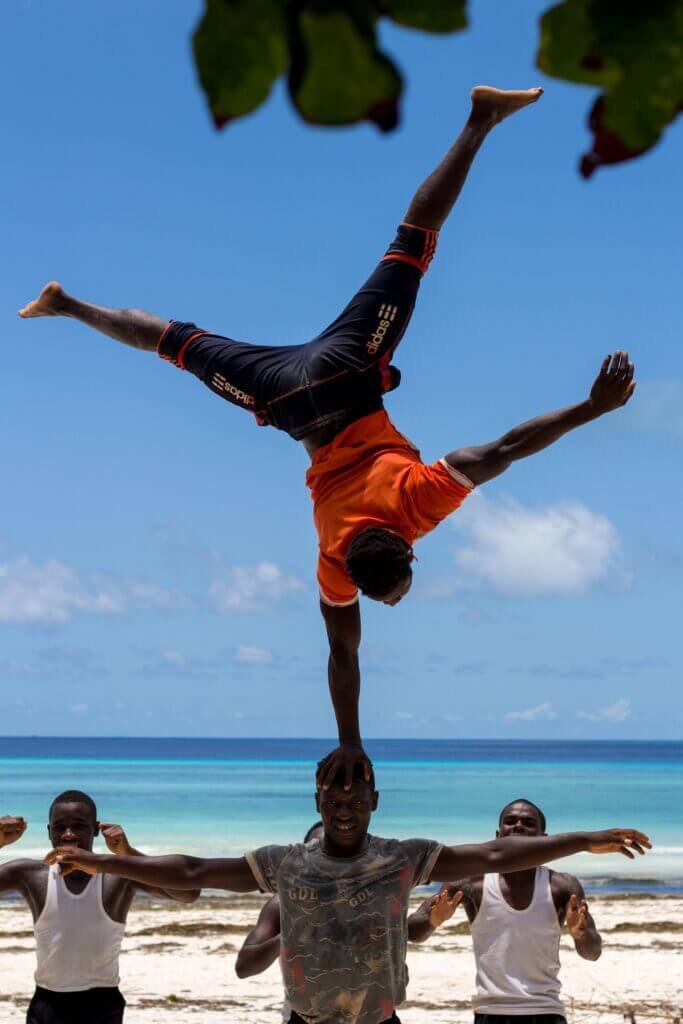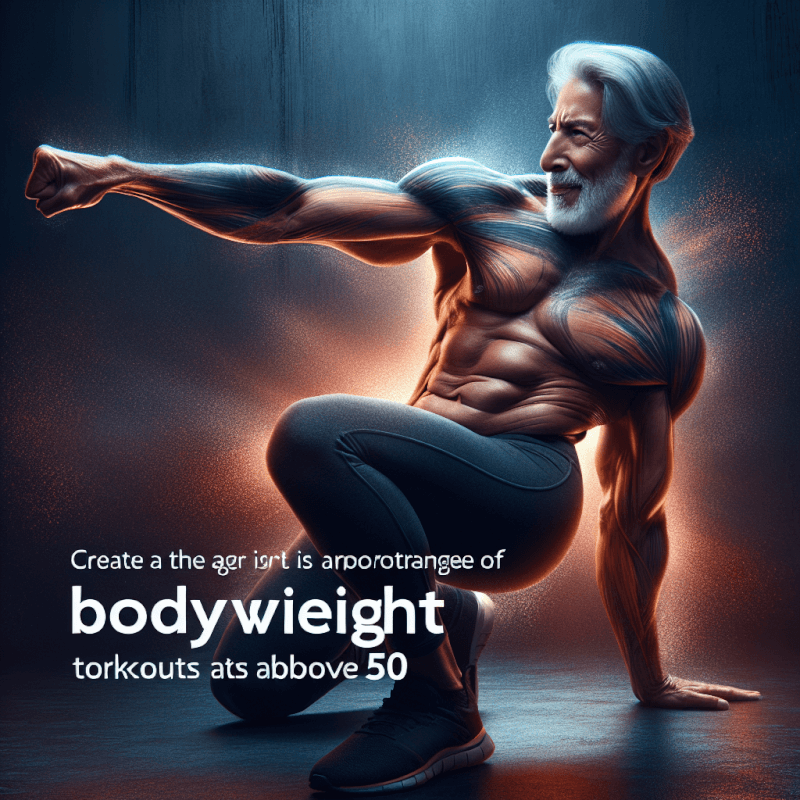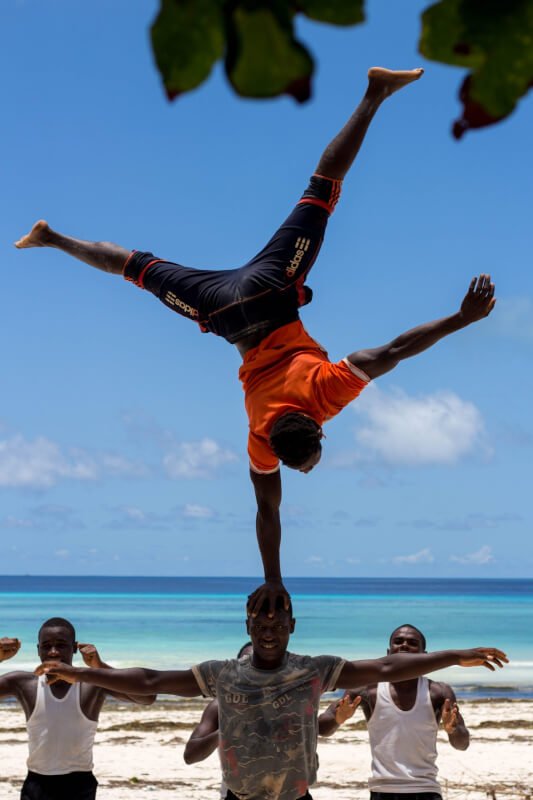Are you over 50 and looking for a simple yet effective way to stay fit? Look no further! In this article, we are going to introduce you to a bodyweight workout specifically designed for individuals over 50. As we age, maintaining our physical health becomes even more crucial, and this workout routine is perfect for anyone looking to stay active and healthy. With just a few basic exercises and a commitment to consistency, you can strengthen your muscles, improve your flexibility, and boost your overall well-being. Get ready to discover a workout routine that will help you feel stronger and more energized than ever before!

Benefits of Bodyweight Workouts for Older Adults
Bodyweight workouts are a fantastic way for older adults to improve their overall fitness and maintain their health. These exercises offer a wide range of benefits that can help older adults stay strong, flexible, and mobile well into their golden years.
Improves Strength and Flexibility
One of the key benefits of bodyweight workouts for older adults is the improvement in strength and flexibility. As we age, our muscles tend to weaken and our joints become less mobile. Bodyweight exercises, such as push-ups, squats, and lunges, help to strengthen the muscles and improve joint mobility. This increased strength and flexibility can make everyday activities easier and help prevent falls and injuries.
Helps Maintain Bone Health
Another important benefit of bodyweight workouts for older adults is the positive impact on bone health. Aging can lead to a loss of bone density, making older adults more susceptible to fractures and osteoporosis. Bodyweight exercises that involve weight-bearing movements, such as walking and squats, help to maintain and even improve bone density. By incorporating these exercises into their routine, older adults can strengthen their bones and reduce the risk of fractures and bone-related conditions.
Enhances Balance and Stability
Maintaining good balance and stability is crucial for older adults, as it helps to prevent falls and injuries. Bodyweight exercises can greatly improve balance and stability by targeting the core muscles, which are responsible for keeping us upright and centered. Exercises like planks, single-leg balance, and chair squats challenge the body’s balance and stability, ultimately leading to better coordination and reducing the risk of falls.
Reduces the Risk of Chronic Diseases
Engaging in regular bodyweight workouts can also have a significant impact on reducing the risk of chronic diseases that are common in older adults. Conditions such as heart disease, diabetes, and certain types of cancer can be prevented or managed through regular exercise. Bodyweight exercises, when done consistently, help to improve cardiovascular health, regulate blood sugar levels, and boost the immune system. This can lead to a decreased risk of developing chronic diseases and improve overall longevity.
Warm-up Exercises
Before diving into a bodyweight workout, it is essential to warm up the body properly. Warming up prepares the muscles and joints for exercise, reducing the risk of injury. Here are some effective warm-up exercises for older adults:
Neck Rotations
Start by gently turning your head from side to side, allowing the neck muscles to stretch and warm up. Perform this movement for about 10 repetitions in each direction.
Arm Circles
Extend your arms out to the sides at shoulder height and make small circles with your hands. Gradually increase the size of the circles and perform 10 repetitions in each direction.
Hip Circles
Stand with your feet hip-width apart and place your hands on your hips. Begin rotating your hips in a circular motion, first clockwise and then counterclockwise. Perform 10 repetitions in each direction.
Knee Lifts
Stand tall and lift one knee towards your chest, while keeping the other foot on the ground. Alternate legs and perform 10 knee lifts on each side.
Ankle Circles
While standing or sitting, lift one foot off the ground and rotate your ankle in a circular motion. Perform 10 ankle circles in each direction before switching to the other foot.
By performing these warm-up exercises, you will ensure that your muscles are adequately prepared for the upcoming workout, minimizing the risk of strains or pulls.
Strength Training Exercises
Strength training is an essential component of any bodyweight workout for older adults. It helps to build and maintain muscle mass, which is crucial for overall strength and functional movement. Here are some effective strength training exercises that can be done without the need for equipment:
Push-ups
Start in a kneeling or full plank position with your hands shoulder-width apart. Lower your chest towards the ground, keeping your core engaged, and push back up to the starting position. If full push-ups are too challenging, feel free to modify by performing them against a wall or using an elevated surface like a sturdy table.
Squats
Stand with your feet hip-width apart and slowly lower your hips down as if you’re sitting back into a chair. Keep your knees tracking over your toes and your chest lifted throughout the movement. Push through your heels to return to the starting position.
Lunges
Step forward with one foot and lower your body until both knees are at a 90-degree angle. Push through your front heel to return to the starting position and repeat on the other side. If balance is an issue, holding onto a chair or wall for support can be helpful.
Planks
Start in a kneeling or full plank position, resting your forearms and toes on the ground. Engage your core, keeping your body in a straight line from head to toe. Hold this position for 30-60 seconds, or as long as feels comfortable.
Modified Push-ups
If full push-ups are not feasible, modified push-ups can be a great alternative. Start in a kneeling position, placing your hands shoulder-width apart on the ground. Lower your chest towards the ground, keeping your core engaged, and push back up to the starting position.
Performing a variety of these strength training exercises will help older adults maintain their muscle mass, increase their overall strength, and support a healthy, active lifestyle.
Flexibility Exercises
Maintaining flexibility is crucial for older adults as it helps to prevent muscle tightness and joint stiffness. Incorporating regular flexibility exercises into a bodyweight workout routine can enhance mobility and range of motion. Here are some beneficial flexibility exercises for older adults:
Shoulder Stretches
Stand tall and extend one arm across your chest, using your other arm to gently pull it towards your body. Hold the stretch for 20-30 seconds and repeat on the other side. This stretch targets the shoulder and helps to improve upper body flexibility.
Leg Stretches
Sit on the floor with your legs extended in front of you, and gently reach towards your toes, aiming to touch them. If reaching the toes is too challenging, reach for your ankles or shins instead. Hold the stretch for 20-30 seconds and repeat a few times.
Calf Stretches
Stand facing a wall or sturdy object, and place one foot behind you, keeping the heel on the ground. Lean forward, feeling the stretch in your calf muscle. Hold for 20-30 seconds and switch to the other side.
Hamstring Stretches
Sit on the edge of a chair or bench and extend one leg straight out in front of you. Gently lean forward from the hips, keeping your back straight, until you feel a stretch in the back of your thigh. Hold for 20-30 seconds and repeat on the other side.
Spinal Twists
Sit on a chair with your feet flat on the ground and your hands resting on your thighs. Slowly twist your upper body to one side, using your hands to assist the movement. Hold the twist for 20-30 seconds and repeat on the other side. This exercise helps to improve spinal mobility.
Incorporating flexibility exercises into a bodyweight workout routine will help older adults maintain their range of motion, prevent muscle imbalances, and enhance overall mobility.

Balance and Stability Exercises
Building and maintaining balance and stability is crucial for older adults, as it can significantly reduce the risk of falls and injuries. Here are some effective balance and stability exercises that can be included in a bodyweight workout:
Heel-to-Toe Walk
Imagine a straight line on the ground and walk heel-to-toe along it, placing the heel of one foot directly in front of the toes of the opposite foot with each step. This exercise challenges your balance and enhances coordination.
Single-Leg Balance
Stand next to a wall or sturdy object for support if needed. Lift one foot off the ground and try to balance on the other leg for as long as possible. If needed, you can lightly touch the wall or object for stability.
Forward and Side Leg Swings
Stand tall with your feet hip-width apart and swing one leg forward and backward, maintaining control and balance throughout the movement. Repeat on the other leg, aiming for a smooth and controlled swinging motion. After completing the forward swings, perform side swings by swinging your leg out to the side.
Toe Raises
Stand tall with your feet hip-width apart and rise up onto your toes, lifting your heels off the ground. Hold for a few seconds, then lower your heels back down.
Chair Squats
Stand in front of a chair with your feet slightly wider than hip-width apart. Slowly lower your hips down towards the chair while keeping your knees tracking over your toes. Lightly touch the chair with your hips, then push through your heels to return to the starting position.
By incorporating these balance and stability exercises into a bodyweight workout routine, older adults can improve their overall coordination, maintain their balance, and minimize the risk of falls.
Cardiovascular Exercises
Cardiovascular exercises are vital for older adults as they help to enhance heart health, improve endurance, and boost overall stamina. Here are some effective cardiovascular exercises that can be included in a bodyweight workout:
Brisk Walking
Walking is a low-impact exercise that can be easily incorporated into daily routines. Aim for a brisk pace that elevates your heart rate and challenges your cardiovascular system. Start by walking for 10 minutes and gradually increase the duration over time.
Cycling
If you have access to a stationary bike or a regular bike, cycling is an excellent cardiovascular exercise. It provides a low-impact workout that is gentle on the joints while still providing a challenging cardiovascular workout. Start with a comfortable pace and gradually increase the duration and intensity.
Stair Climbing
Climbing stairs is an effective way to increase heart rate and build lower body strength. If you have access to a staircase, try climbing up and down for several rounds. If not, you can also simulate stair climbing by using a step platform or step stool.
Jumping Jacks
Stand with your feet together and your arms by your sides. Jump your feet out to the sides while simultaneously raising your arms above your head. Jump your feet back together and lower your arms back down. Perform jumping jacks for a set amount of time, such as 30 seconds, and gradually increase the duration as your fitness level improves.
High Knees
Stand tall with your feet hip-width apart. Lift one knee towards your chest while jumping off the opposite foot. Alternate legs and continue the movement, aiming to bring your knees as high as possible. Perform high knees for a set amount of time, such as 30 seconds, and gradually increase the duration as your fitness level improves.
Incorporating cardiovascular exercises into a bodyweight workout routine will help older adults improve their heart health, increase their stamina, and boost their overall energy levels.

Sample Bodyweight Workout Routine
Putting together a comprehensive bodyweight workout routine for older adults can provide structure and guidance. Here’s an example of a well-rounded bodyweight workout routine:
Warm-up: 5 minutes
Perform the warm-up exercises mentioned earlier to prepare the body for exercise. Spend around 5 minutes on dynamic stretching and mobility exercises.
Strength Training: 15 minutes
Perform 2-3 sets of each strength training exercise mentioned earlier, focusing on 10-12 repetitions per exercise. Take short breaks between sets to recover and hydrate.
Flexibility Exercises: 10 minutes
Take some time to stretch the major muscle groups after the strength training session. Hold each stretch for 20-30 seconds and repeat a few times.
Balance and Stability Exercises: 10 minutes
Incorporate balance and stability exercises mentioned earlier into the routine. Spend around 10 minutes on these exercises, focusing on control and balance.
Cardiovascular Exercises: 20 minutes
Choose 2-3 cardiovascular exercises from the options mentioned earlier and perform them for 20 minutes. You can alternate between exercises or perform one continuously.
Cool-down and Stretches: 5 minutes
To conclude the workout, perform gentle cool-down exercises such as walking in place and slow stretching for major muscle groups. Spend around 5 minutes on this cool-down period.
Remember, this is just one example of a bodyweight workout routine. Feel free to modify and adapt it based on your fitness level and preferences. The key is to find a routine that challenges you while still being enjoyable and manageable.
Safety Tips for Older Adults
While bodyweight workouts are generally safe and beneficial for older adults, it’s essential to keep a few safety tips in mind to ensure a positive and injury-free experience:
Consult with a Healthcare Professional
Before starting any new exercise routine, it’s crucial to consult with a healthcare professional, especially if you have any underlying health conditions or concerns. They can provide personalized guidance and make any necessary recommendations based on your specific needs.
Start Slowly and Progress Gradually
If you’re new to exercise or haven’t been active for a while, it’s important to start slowly and gradually increase the intensity and duration of your workouts. This allows your body to adapt and reduces the risk of overexertion or injury. Listen to your body and take breaks as needed.
Listen to Your Body
Pay attention to how your body feels during and after the workouts. If you experience pain, dizziness, or any other discomfort, it’s essential to listen to your body and adjust the exercises or intensity accordingly. Pushing through pain or discomfort can lead to injuries.
Use Proper Form
Proper form and technique are crucial to prevent injuries and maximize the benefits of each exercise. Take the time to learn and understand how each exercise should be performed correctly. If needed, seek guidance from a qualified fitness professional to ensure proper form and technique.
Stay Hydrated
As with any physical activity, it’s important to stay hydrated throughout your bodyweight workouts. Drink water before, during, and after your workouts to maintain optimal hydration levels. Dehydration can lead to decreased performance and an increased risk of muscle cramps or overheating.
Take Rest Days
Rest is a crucial component of any exercise routine, especially for older adults. Allow your body time to recover and repair itself by incorporating rest days into your workout schedule. This helps to prevent overuse injuries and promotes optimal fitness gains.
By following these safety tips, older adults can enjoy the benefits of bodyweight workouts while minimizing the risk of injuries or other health complications.

Conclusion
Bodyweight workouts are an excellent option for older adults looking to stay active, maintain their health, and enjoy the numerous benefits of exercise. From improving strength and flexibility to enhancing balance and stability, bodyweight exercises target all essential components of fitness.
Remember to start slowly, listen to your body, and adapt the exercises to your fitness level and abilities. Incorporating different types of exercises, such as strength training, flexibility exercises, balance and stability exercises, and cardiovascular workouts, creates a well-rounded routine that supports overall health and well-being.
Stay active, have fun, and embrace the many benefits of bodyweight workouts at any age. With consistency and dedication, you can improve your quality of life, maintain your independence, and continue to enjoy an active lifestyle.


